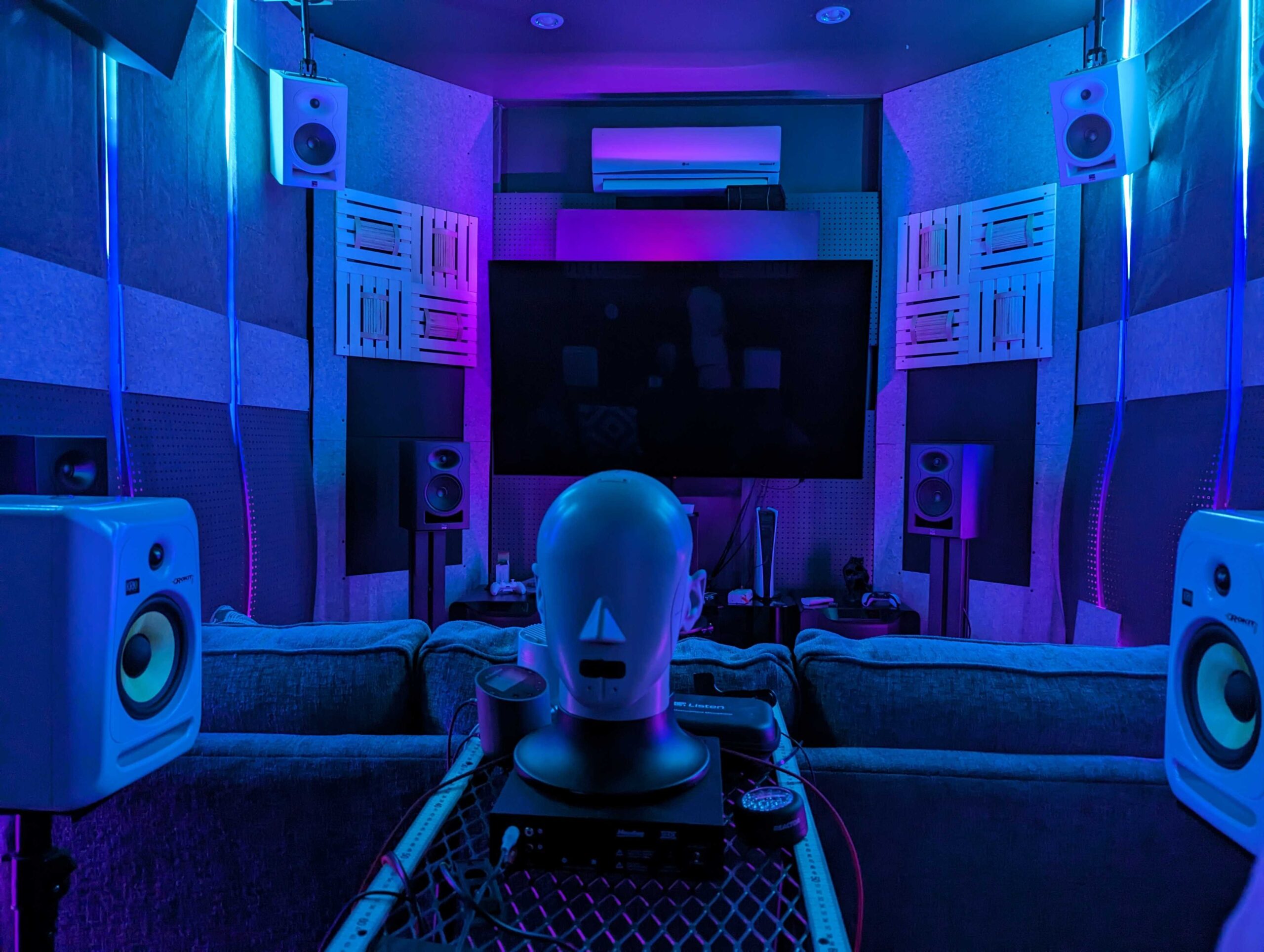All products featured are independently chosen by us. However, SoundGuys may receive a commission on orders placed through its retail links. See our ethics statement.
Best Headphones under $200
We tested headphones under $200 across ANC, design, battery, and comfort.
November 3, 2025
Adam is an Editor at SoundGuys specializing in gaming headsets, flagship headphones, and earbuds. A lifelong fan of video games and cinema, he brings a sharp ear and passion for immersive sound to every review. Beyond hardware, Adam writes thought-provoking features and opinion pieces that explore how audio tech shapes our lives. Armed with a BA in Cognitive Science, he pairs technical insight with a love for music’s psychological uplift. At home, he still rocks his original Sennheiser MOMENTUM over-ears, switches to Bose QuietComfort Ultra on flights, and relies on Galaxy Buds2 Pro while out and about.
Finding great headphones doesn’t mean spending a fortune — there are plenty of impressive options under $200. We’ve tested hundreds of models in our lab and highlighted the top performers that deliver the best mix of sound, features, and reliability. Our Headphone Score factors in ANC, durability, value, design, connectivity, portability, battery life, and comfort, so you can shop confidently knowing these picks excel across the board.
Compare table
Filter
- Compare tableProductVotes
- 34 total votes34 total votes
$200
8.4
7.6
8.4
6.9
7.7
8.0
7.5
9.5
9.9
9.0
9.0
- 24 total votes24 total votes
$80
8.3
7.2
8.1
6.7
9.5
8.0
7.7
7.5
9.9
9.5
8.5
- 12 total votes12 total votes
$100
8.2
7.1
8.0
6.5
9.0
7.5
7.0
9.0
9.8
9.0
8.0
- 9 total votes9 total votes
$130
8.1
6.1
7.3
7.5
8.4
7.0
8.5
7.5
9.9
9.0
8.3
- 3 total votes3 total votes
$80
7.9
7.2
8.0
6.0
9.5
6.0
7.0
9.0
9.9
8.5
8.0
- 1 total votes1 total votes
$180
7.9
5.0
7.4
6.9
8.2
7.0
7.0
8.5
9.8
8.8
8.6
- 1 total votes1 total votes
$84
7.7
7.0
8.1
6.5
6.5
8.0
7.0
8.0
9.8
8.0
8.0
- 0 total votes0 total votes
$148
7.7
5.2
6.7
6.5
6.8
7.0
7.5
9.0
9.7
8.0
8.6
- 2 total votes2 total votes
$149
7.6
4.2
6.5
6.0
7.5
7.0
7.6
9.0
9.9
7.9
8.2
- 0 total votes0 total votes
$200
7.5
3.6
0.0
8.5
7.0
7.0
7.0
8.5
9.9
9.0
8.5
- 1 total votes1 total votes
$200
7.4
7.5
8.5
6.5
4.0
6.0
7.0
9.0
9.0
9.0
8.0
- 2 total votes2 total votes
$198
7.1
3.4
0.0
6.9
7.7
7.6
7.3
9.0
9.9
7.2
6.9
Product chart
In the chart above, you can see how each of the headphones compares in terms of price and performance.
To gather information about how well each of the earbuds and headphones work, we subject each product to a number of objective tests. We use a Bruel & Kjaer 5128 acoustic measurement system to test headphones and earbuds in our SoundGuys lab. The ear canal of the artificial head was created by averaging and smoothing 3D models of individual ear canal features from the MRI scans of 40 different people.

We perform the following testing to determine the best headphones and best earbuds:
- We run sequences to determine the best fit of the headphones, and if there are any manufacturing issues with the product.
- We measure the headphones’ performance and compare the frequency response to our industry-validated SoundGuys Headphone Preference Curve to give context to readers.
- To rate sound quality, we use the Multi-Dimensional Audio Quality Scores (MDAQS) algorithm from HEAD acoustics. These are virtual mean opinion scores as calculated by a powerful machine learning model based on the input of real listeners.
- We play several samples of shaped noise over loudspeakers to test noise canceling and record with our artificial head. We take samples with ANC on, ANC off, and with the headphones off the head. After subtracting the appropriate curves from each other, we can see how well the headphones block out noise.
- To evaluate microphone quality, we play pre-recorded spoken Harvard sentences from a calibrated artificial mouth in our test chamber, either with or without simulated background noises, simulated reverberant spaces, or artificial wind.
- To measure battery life, we play back music through the headphones or earbuds peaking at 75dB(SPL), a safe and realistic listening level.
In addition to objective testing, our team of audio experts uses each of the headphones and earbuds to evaluate the experience of using the product. By wearing the headphones in day-to-day use, we evaluate the comfort, noting any pain points. We also make sure to try out each of the features that the headphones have to offer, such as using the equalizer in the companion app.
Using a combination of subjective and objective testing, we score each product. To learn more about how we evaluate headphones and earbuds, check out our in-depth explainer on how we test.

Here at SoundGuys, we’ve been testing audio products for over a decade. Our team comprises audio product experts who have tested hundreds of different headphones, earbuds, and speakers. Moreover, our team comes from diverse backgrounds and a wealth of expertise, including audio engineering, film production, journalism, podcasting, music production, and even touring musicians.
Everything we recommend results from our objective measurements and great subjective experiences. Ultimately, we want you to enjoy your purchase or, at the very least, leave our site with a little more knowledge about the inner workings of audio. To see why you can trust us with your purchase decision, make sure to check out our ethics policy.
Poll
How much are you willing to spend on good headphones?
Best overall pick: Sony ULT WEAR

We recommend Sony ULT WEAR as our top overall pick for their combination of strong ANC, long battery life, and broad connectivity. The ULT WEAR delivers more than 25dB of attenuation at frequencies above ~80Hz and lasted 32 hours and 35 minutes in our standardized battery test. Our MDAQS notes that these headphones are bass-forward, so we recommend using the Sony Sound Connect app and the ULT button’s customization to temper the heavy low end. They support Bluetooth 5.2 with SBC, AAC, and LDAC, offer Multipoint, and can also be used wired via the included 3.5mm cable (they do not support USB-C audio). The ULT WEAR also earned Best ANC, Best Battery Life, Best Call Quality, Best Over-Ear Headphones, Best for iPhone users, Best for Comfort, and Bluetooth 5.0 and more recognition in our coverage.
Sourced from Sony ULT WEAR review – SoundGuys.
Best Value pick: JLab JBuds Lux ANC


For shoppers focused on bang for the buck, JLab JBuds Lux ANC stands out as a strong value option thanks to its feature set and battery life. The JBuds Lux ANC delivers about 44 hours and 22 minutes in our battery test and supports fast charging that gives roughly four hours of playback from a ten-minute charge. Its companion app includes a 10-band EQ and adjustable ANC modes, which we recommend using to correct the headphones’ out-of-the-box tonal issues. ANC is serviceable for commuting, offering roughly 10–20dB of low-frequency reduction under 700Hz while the ear cups provide strong high-frequency isolation. Those features, paired with a compact foldable design, make these headphones a compelling pick for budget-conscious commuters.
Sourced from JLab JBuds Lux ANC review – SoundGuys.
Best for Android users pick: Anker Soundcore Space One

The Anker Soundcore Space One is our pick for Android users because it supports Bluetooth 5.3 and LDAC, and the Soundcore app offers strong personalization like an eight-band EQ and HearID. In our battery test the Space One lasted 42 hours and 57 minutes with ANC on, and it supports Bluetooth multipoint for pairing to two devices. The app also includes adjustable ANC strength, adaptive ANC, and useful extras such as a decibel meter and custom sound profiles. Physically, the headphones fold and feel lightweight thanks to their plastic construction, and they include an auxiliary cable for wired listening (they don’t pass audio over USB-C). Those traits make the Space One especially appealing to Android users who want codec support and deep app customization.
Sourced from Anker Soundcore Space One review – SoundGuys.
Best Sound Quality pick: JBL Live 670NC

The JBL Live 670NC earns our sound-quality pick for its lively signature and extensive customization via the JBL Headphones app. The Live 670NC pairs on Bluetooth 5.3, includes a 3.5mm cable for wired use, and offers multipoint connectivity for two devices. In lab testing ANC performance is strong for an on-ear design, approaching about 30dB of attenuation around 250Hz, and the headphones provided 54 hours and 57 minutes in our battery test. The app adds EQ presets, a 10-band graphic EQ, and spatial/surround options for movies, letting listeners tailor the JBL sound to taste. On balance, the Live 670NC’s combination of punchy JBL tuning and deep app control makes them our top pick for sound quality in this group.
Sourced from JBL Live 670NC review – SoundGuys.
Our verdict
Across the wireless and wired headphones we tested that fall under $200 and were released within the last decade, the Sony ULT WEAR is the most complete package thanks to effective ANC, long battery life, and flexible connectivity—we recommend it if you want a single pair that covers commuting, calls, and long listening sessions. For buyers on a strict budget, the JLab JBuds Lux ANC delivers remarkable battery life and app-driven EQ and ANC customization, making it the best value for daily commuters. Android users who want codec support and deep app tuning will appreciate the Anker Soundcore Space One’s LDAC support and HearID features. If sound quality and on-headroom customization are your priorities, the JBL Live 670NC pairs strong tonal character with a roomy app EQ and excellent battery life.
The remaining models also have clear fits: the EarFun Wave Pro is a lightweight, travel-friendly option with very long battery life and capable ANC; the Sennheiser ACCENTUM Wireless targets listeners who prioritize sound quality with USB-C audio and wide codec support plus about 46 hours of battery life; and the Sony WH‑XB910N is tuned for bass heads and offers both wired and wireless flexibility. Each of those remaining headphones suits a specific listener profile based on comfort, battery, or tonal preference, so match those strengths to how you plan to use them.
FAQ
-
On-ear rest on your ears, smaller and more portable.
-
In-ear (earbuds) fit inside your ear canal, most compact.
-
Wired can offer more consistent sound quality and no battery worries.
-
Wireless adds freedom of movement, Bluetooth features, and portability.
-
Over-ear headphones with strong ANC work best on planes and trains.
-
Compact earbuds are great for commuting and portability.
Higher-priced models usually have better ANC, premium materials, wider soundstage, and extra features.
Active Noise Cancelling uses microphones to cancel out external noise for a quieter experience.
Open-back designs allow air and sound to pass through, creating a wider, natural soundstage but leaking sound. Closed-back isolate better and have more bass punch.
No, it’s a premium feature. Multipoint is useful if you switch often between laptop and phone.
Yes, by reducing background noise so you don’t need to turn up the volume. But listening too loud can still cause damage.
Isolation refers to the ability of your headphones to block outside noise from reaching your ears. This might sound like active noise cancelation, but it isn’t. Active noise canceling uses microphones to pick up the sounds that are going on around you and then uses clever processing to cancel them out. In physics, it’s called destructive interference, and you can learn more about that in our article on how noise canceling works, but that isn’t what isolation is.
Isolation is simply having a physical barrier between your ears and the outside noises. Every time you stuff your fingers in your ears, you’re isolating yourself. You might hear certain loud noises around you, but for the most part, sounds are blocked out. A good pair of over-ear headphones can do something similar. They’ll cover your ears and block noises that would otherwise interfere with the music you’re listening to.
Not yet. While Bluetooth has become way better and more convenient in the last few years, it still can’t compete on a technical level with wired over-ear headphones. Sure, we might be a little biased against removing the headphone jack. Still, even our objective testing of the LDAC codec (which is arguably one of the top transfer methods currently available) revealed that Bluetooth falls short. Of course, you probably won’t have to worry about it too much if you’re over the age of 24 because our hearing tends to go a lot sooner than you might realize, but it’s still something you should be aware of. At least for now, wired headphones still reign supreme.
Over-ear headphones generally offer superior sound quality due to their larger drivers and better isolation, which minimizes ambient noise and allows for a more immersive listening experience.
Thank you for being part of our community. Read our Comment Policy before posting.